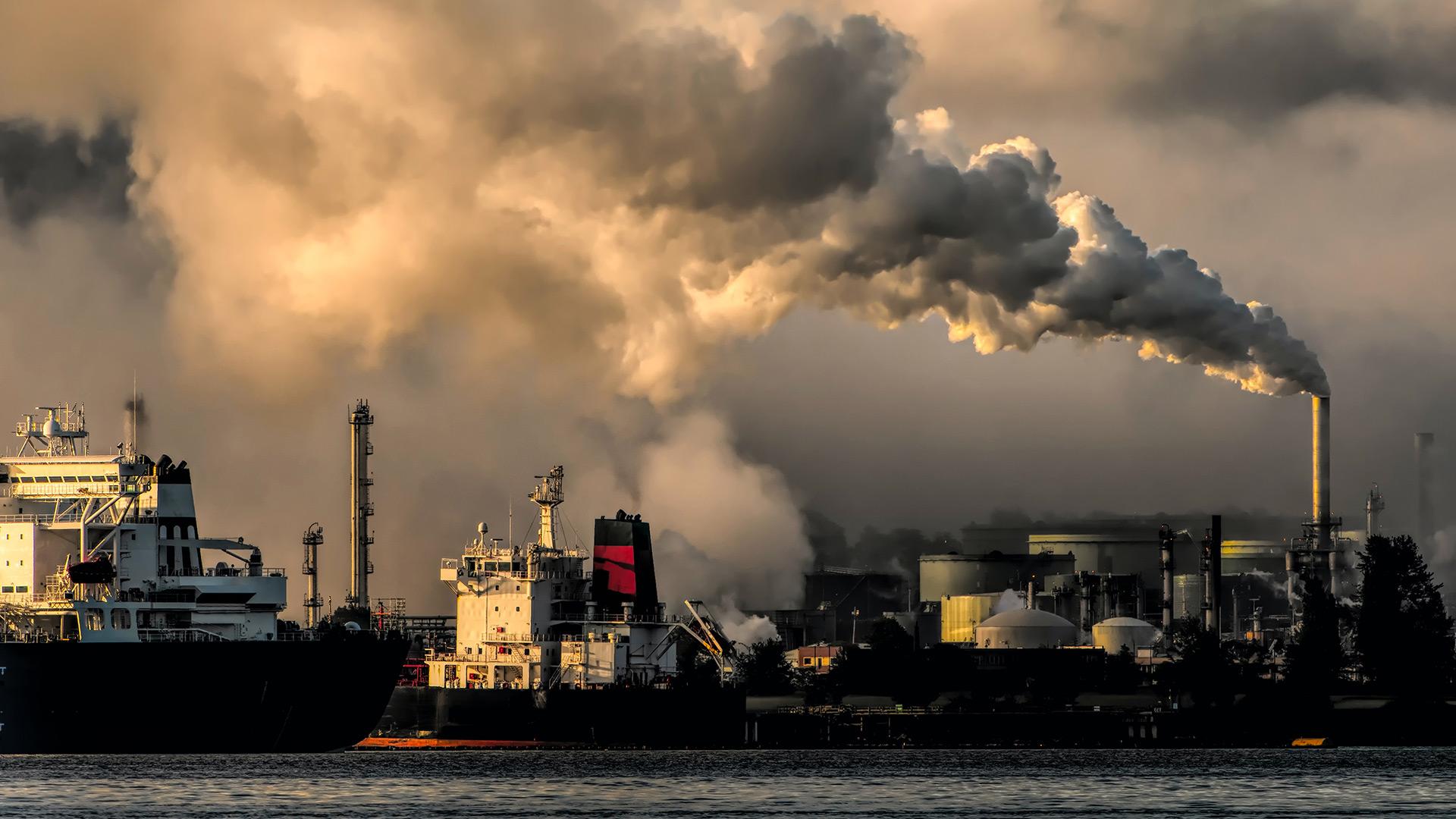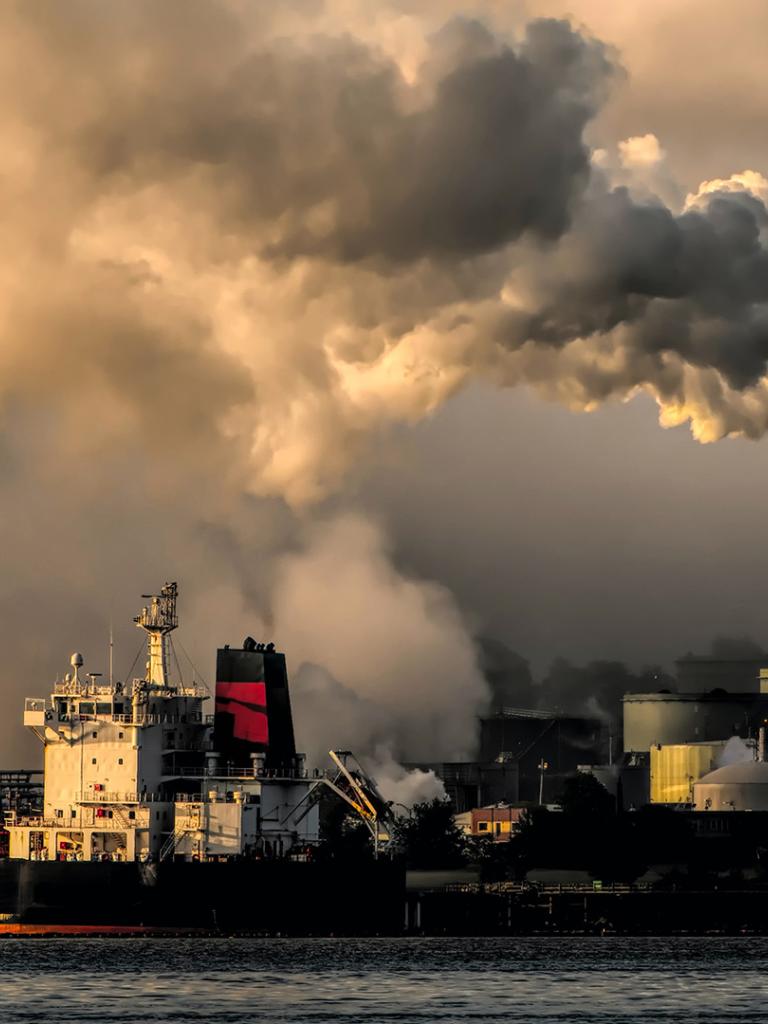
How did the first coronavirus lockdown affect air and ocean pollution?
EUMETSAT expert examines satellite and ground-based pollution data from the first lockdown and weighs in on the effects


Find out which environmental pollutants decreased during lockdown, which remained unaffected, and what this might mean for the future.
01 November 2023
21 October 2021
The first lockdown due to the coronavirus in 2020 led to striking absences in public spaces across the globe. A virtual photography exhibition called Emptiness: an urban memory poignantly captured this, from the nearly barren expanse in front of the Brandenburg Gate in Berlin to the almost car-free Champs-Élysées in Paris to the stretch beneath an overpass in Lagos, Nigeria, where the only human forms to be seen were the women painted on the columns holding it up.
But what were the environmental effects of all this staying-at-home? Dr Federico Fierli, an atmospheric composition expert at EUMETSAT, examines satellite and ground-based data to clarify which pollutants in the air and ocean changed—and which ones did not—as a result of the first coronavirus lockdown.

One way to keep tabs on the environment is by monitoring the amount of nitrogen dioxide, NO2, in the atmosphere. Since nitrogen dioxide mainly comes from burning fuel, the decrease in the amount of traffic during the 2020 March and April lockdown in Europe meant that one could expect a decrease in the amount of nitrogen dioxide in the atmosphere, which is exactly what the Global Ozone Monitoring Experiment-2, an instrument aboard EUMETSAT’s Metop satellites, observed.
“In 2020, we had less pollution than in previous years, despite the variability of the weather. One day could be polluted and the following day not. But even if you take this into account, 2020 was an exceptional year,” said Fierli.
“The decrease in nitrogen dioxide was clearly an effect of lockdown.”


Another pollutant to keep an eye on is ammonia, a gas that is produced primarily through agriculture. By comparing the atmospheric concentration of ammonia in China as observed by the Infrared Atmospheric Sounding Interferometer aboard the Metop satellites between 11 February and 20 March for 2017, 2018, and 2019, before lockdown occurred, to the same period in 2020, when the region was under lockdown, one sees no significant difference.
“The production of ammonia did not change during lockdown because the production of food didn’t change during that time. This same lack of change can be seen during Europe’s lockdown as well,” said Fierli.


Pollutants in the ocean are also valuable indicators of environmental health.
The Sentinel-3 satellite, a satellite of the EU Copernicus programme, allows remote sensing experts to monitor the sea surface temperature. By comparing the temperature of the discharge of the Boukhalef River downstream from a wastewater treatment plant in Tangier, Morocco before lockdown, in April 2019, and during lockdown in 2020, it is clear that during lockdown, the water was cooler.
“It’s not always straightforward to relate the changes in emissions to consumption or energy,” said Fierli, although he thinks it is likely that during lockdown, less wastewater from the treatment plant as well as less industrial discharge entered the river.
“With satellites, we can really monitor some surprising impacts, including in places one might not expect,” he added.

Lastly, it is essential to consider the concentration of carbon dioxide in the atmosphere, as this is the main greenhouse gas produced through human activity. The amount of carbon dioxide fluctuates seasonally due to leaves and other plant material. When they decompose during the autumn and winter, they produce carbon dioxide that builds up in the atmosphere, peaking in the northern hemisphere in spring. This process reverses when new leaves grow and, through photosynthesis, draw carbon dioxide out of the atmosphere, leading to a low annual concentration in autumn.
By looking at data collected by NOAA at the Mauna Loa Observatory in Hawaii, one can see the monthly average showing the seasonal fluctuations, in red, as well as the monthly average after corrections for these seasonal fluctuations have been made, in black.
The latter is where one can look for insight into any changes in carbon dioxide concentration the 2020 lockdown may have caused.
So what does all this mean for the future? Should we expect lasting environmental benefits as a result of the first lockdown?
Fierli doesn’t think so.
“For most pollutants—basically, what can be expected is to go back to the norm,” he said.
“Lockdown can be seen as a temporary period during which emissions from several sectors, including transport, were drastically cut. Now, emissions are expected to bounce back, according to energy experts who foresee higher consumption to support the economy after lockdown. Nevertheless, the control of pollution has been a work in progress since before the COVID crisis; in the last decade, emissions have been reduced in most countries in Europe and it is important to keep going in this direction.”
As atmospheric pollutants continue to rise, monitoring them is essential, which is why EUMETSAT is looking forward to three upcoming satellite missions that will make it possible to measure them with greater accuracy.
The Copernicus programme’s Sentinel-4 and Sentinel-5 missions, as well as the next-generation of the Infrared Atmospheric Sounding Interferometer, to be launched as of 2024, will enable EUMETSAT to collect more frequent measurements of atmospheric gases and provide users with higher-resolution data than is currently possible.
In addition, the upcoming Copernicus Anthropogenic Carbon Dioxide Monitoring mission, to be launched in late 2025, will measure carbon dioxide in combination with nitrogen dioxide and carbon monoxide, making it possible to distinguish the carbon dioxide that has been emitted through human activity. By monitoring specific carbon dioxide emission hotspots, such as megacities and power plants, as well as keeping track of emissions on a national level, the data collected can be used by policy makers to design more targeted and efficient measures.
Author:
Sarah Puschmann